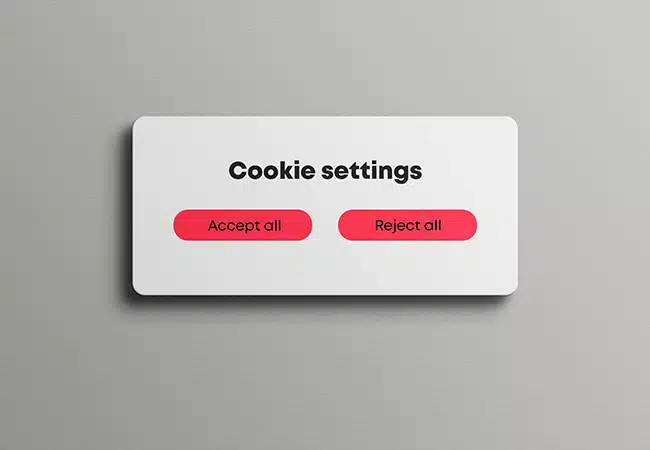What is universal consent management and do you need it?
Posted: August 11, 2023
The role of compliance has increasingly become popular in a privacy-focused world where controllers of data must adhere to laws and regulations centered around data protection. These laws and regulations empower individuals to take control of their personal data and require the controller organizations to process individuals data only on legal grounds.
One of these legal grounds includes obtaining valid consent from users. Under the EU’s GDPR, maintaining an audit trail of valid consent requires consent records to demonstrate who consented, when they consented, how they consented, and what information was conveyed to them at the time.
In response, many organizations have adopted a consent-based compliance strategy that incorporates consent and preference management platforms.
So where does universal consent management come into it all?
- What is universal consent management?
- Why is there a need for universal consent management?
- Challenges businesses face in managing consent across various platforms and jurisdictions
- Benefits of implementing universal consent management
- Does your organization need universal consent management?
What is universal consent management?
Fundamentally, universal consent management is the term used to describe the collection and management of consent across different devices and platforms.
Some of these consents include:
- Cookie consent
- Consent to market
- Consent to be communicated with via email, phone, SMS etc.
- Consent to connected devices like wearables, smart TVs, voice assistants
- Consent to privacy policies, terms of service and terms and conditions
In order to collect consent across multiple areas, organization’s are moving towards universal consent management platforms that can manage the entire consent lifecycle, from collection to withdrawal. These platforms integrate seamlessly into an organization’s wider technology stack (CRM, CMS, BI, email etc.) to then centralize and enforce individual consent preferences across systems for full compliance.
Why is there a need for universal consent management?
As fulfilling as it may seem to the point that an organization with consent and preference management mechanisms in place could be compliant with data privacy regulations, it is not enough. Consent and preference management tools deal mainly with the most visible and common means of collecting personal data, i.e., cookies.
Besides cookies, there are numerous other alternative tracking and data collection methods that businesses need to meet the same requirements as they do for cookie consent. In doing so, through consent mechanisms, websites should inform consumers about the varied data trackers in use and provide them with a means of opting into or out of data collection and processing.
Furthermore, compliance with data privacy regulations is not enough. Businesses also need to comply with other regulations that extend beyond data privacy regulations, where obtaining consent from consumers and recording it for audit is a must.
The application of most consent management platforms is limited to managing consent within a specific application, website, or service. However, businesses nowadays are more versatile than ever. They operate across multiple jurisdictions and platforms, including apps, websites, social media platforms, emails, support calls, paper forms, IoT devices, wearables, etc. They need a standardized and centralized approach for consent management that addresses the challenges of today’s interconnected digital ecosystem and the laws applicable to data protection across different jurisdictions.
That’s where universal consent management comes into action. This approach unifies individual consent obtained from diverse touch points across various platforms and provides solutions to deal with consent across jurisdictions with conflicting legal requirements. This approach seamlessly manages and synchronizes user preferences for data processing activities, enhancing transparency, compliance, and user trust.
Challenges businesses face in managing consent across various platforms and jurisdictions
Navigating challenges across various platforms and jurisdictions requires a robust and adaptable consent management approach. Dedicating time, effort, and resources to ensure comprehensive and accurate consent practices comes after understanding the challenges of managing consent across various platforms and jurisdictions.
Challenges across various platforms
Businesses nowadays operate across numerous platforms, including websites, mobile apps, IoT devices, and more. Different platforms have unique user interfaces and interactions for consent due to their varying formats, contexts, and user expectations.
- While websites use banners, pop-ups, or inline notifications to request consent, the challenge with consent lies in designing consent elements in a way that effectively communicates the purpose of data processing while not disrupting the user experience. Mobile apps have limited screen space, so designing consent requests requires a concise yet comprehensive presentation whose seamless integration into the app’s design becomes challenging.
- Different platforms engage in unique data processing activities. Such variations may require different types of consent requirements than others. For example, a social media platform may request permission to share data with third-party advertisers, while an IoT device might ask for consent to collect geological data. Also, while websites may require consent to use cookies for analytics, apps would like to access device features for the same purpose. Such a distinction needs varying levels of consent granularity.
Challenges across various jurisdictions
Each jurisdiction may have unique definitions of sensitive data, which may include personal information like health records, biometric data, religious beliefs, etc. Such variation in the scope of personal data adds layers of complexity to consent mechanisms.
- Jurisdictions may have conflicting rules about how they define consent, age restrictions, and data processing activities. Variations in data retention and consent duration may be complex to deal with.
- Language barriers may often lead to linguistic nuances and cultural sensitivities. Maintaining messaging and language may become inconsistent; thereby, the purposes and implications of data processing may not be communicated clearly and transparently.
- As an extension of a country’s sovereignty, data protection regulations in certain jurisdictions often impose restrictions on the transfer of data across their borders. Such restrictions, for example, include treating data in a manner consistent with the data protection standards of the originating jurisdiction.
- Data protection laws keep evolving. If businesses do not stay updated with the new regulations and amendments being introduced, they may be subject to penalties.
Benefits of implementing universal consent management
Streamlined processes
Universal consent management streamlines the process of obtaining and managing user consent across various platforms and jurisdictions. It reduces the hassle of duplicating efforts and operational complexity that otherwise would require dealing with each platform and jurisdiction separately.
A centralized approach to consent management enables businesses to manage consent preferences, updates, and withdrawals from a single point of control. A unified system so achieved reduces administrative burdens and maintains consistency across services.
Enhanced user experience
It offers a centralized consent dashboard that allows users to view and manage their consent preferences for different platforms and tracking mechanisms all in one place.
It simplifies the consent management process for users and ensures consistent practices regardless of the platform, enhancing user understanding and trust in the data handling practices of organizations.
It minimizes disruptions to the user journey across platforms, resulting in increased engagement with the consent process and empowerment to make informed choices.
Regulatory compliance
Universal consent management paves the path for consistent and standardized consent practices, ensuring that consent is handled according to the specific requirements of various data protection regulations, such as GDPR, CCPA, etc.
Centralized oversight and management of user consent enables businesses to effectively monitor and document consent-related activities, simplifying audit processes.
Customizable consent templates offered by universal consent management allow businesses to tailor the language and content of consent requests in line with local laws.
The granular consent feature allows businesses to segment consent based on different data processing activities and capture and manage consent at varying levels of granularity required by data privacy regulations.
Does your organization need universal consent management?
If your organization processes users’ personal data across multiple platforms, applications, websites, and jurisdictions, implementing universal consent management can definitely prove beneficial for you.
Also, where sectoral- and state-specific data protection laws apply, such as COPPA (Children’s Online Privacy Protection Act) and CCPA (California Consumer Privacy Act) respectively, organizations that collect, process, and share sensitive data can implement universal consent management to ensure compliance, streamline consent processes, enhance the user experience, and demonstrate a commitment to the user’s personal data protection.

Want to learn more about GDPR compliance?
Explore our comprehensive GDPR Guide, which delves into the significant impact of this data privacy regulation. With the extended jurisdiction of the GDPR, it now applies to all companies processing personal data of individuals residing in the European Union, irrespective of the company’s location.

